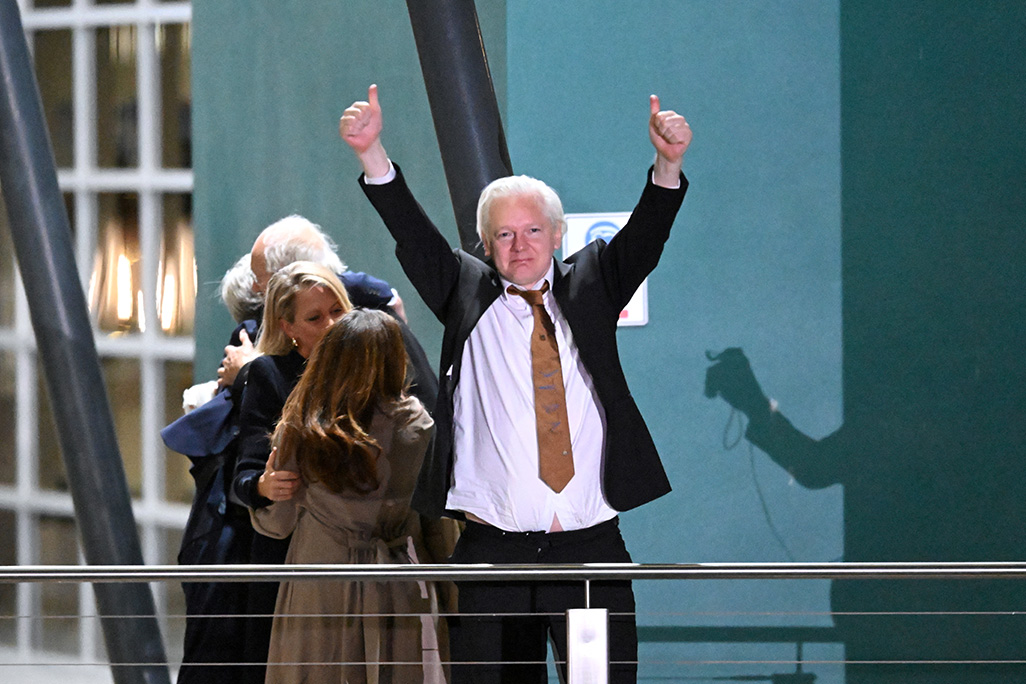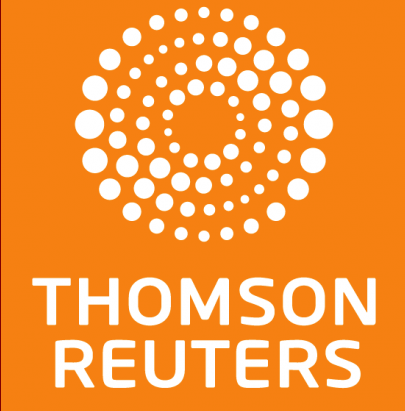WikiLeaks founder Julian Assange landed to an ecstatic welcome in Australia on Wednesday after pleading guilty to violating U.S. espionage law in a deal that sets him free from a 14-year legal battle.
Assange disembarked from a private jet at Canberra airport just after 7:30 p.m. (0930 GMT), waving to waiting media and cheering supporters before passionately kissing his wife, Stella, and lifting her off the ground.
He embraced his father before entering the terminal building with his legal team.
Assange has not spoken publicly since being released and did not appear at a Wikileaks press conference at a hotel in Canberra, where Stella Assange said it was too soon to say what her husband would do next.
“Julian needs time to recover, to get used to freedom,” she said. “I want Julian to have that space to rediscover that freedom.”
She added she believed her husband would one day be pardoned.
Australia Prime Minister Anthony Albanese, who has lobbied for years to free Assange, said he had spoken to him by phone after his plane landed.
“I had a very warm discussion with him this evening, he was very generous in his praise of the Australian government’s efforts,” Albanese told an earlier press conference.
“The Australian government stands up for Australian citizens, that’s what we do.”
Assange’s arrival ends a saga in which he spent more than five years in a British high-security jail and seven years in asylum at the Ecuadorean embassy in London battling extradition to Sweden on sexual assault allegations and to the U.S., where he faced 18 criminal charges.
Those charges stemmed from WikiLeaks’ release in 2010 of hundreds of thousands of classified U.S. military documents on Washington’s wars in Afghanistan and Iraq – one of the largest breaches of secret information in U.S. history.
During a three-hour hearing held earlier in the U.S. territory of Saipan, Assange pleaded guilty to one criminal count of conspiring to obtain and disclose classified national defence documents but said he had believed the U.S. Constitution’s First Amendment, which protects free speech, shielded his activities.
“Working as a journalist I encouraged my source to provide information that was said to be classified in order to publish that information,” he told the court.
“I believed the First Amendment protected that activity but I accept that it was…a violation of the espionage statute.”
Chief U.S. District Judge Ramona V. Manglona accepted his guilty plea, noting that the U.S. government indicated there was no personal victim from Assange’s actions.
She wished Assange, who turns 53 on July 3, an early happy birthday as she released him due to time already served in a British jail.
What is WikiLeaks and why did it get Julian Assange in so much trouble?
WHAT IS WIKILEAKS?
On its website, WikiLeaks says it is a multinational media organisation that specialises in analysing and publishing databases of censored or otherwise restricted materials involving wars, spying and corruption.
It was founded by Assange in 2006 and lists several international media organisations among its co-publishers, research partners and funders. It also says that it is a not-for-profit organisation that is funded through public donations.
“WikiLeaks is a giant library of the world’s most persecuted documents,” Assange said of the organisation in an interview with German newspaper Der Spiegel in 2015. “We give asylum to these documents, we analyse them, we promote them and we obtain more.”
The most controversial leaks by WikiLeaks featured classified U.S. military documents and videos from the war it waged in Iraq and Afghanistan in the early to mid 2000s that it said highlighted issues such as abuse of prisoners in U.S. custody, human rights violations and civilian deaths.
U.S. authorities said the leaks were reckless, damaged national security, and endangered the lives of agents. Assange’s many supporters said the site upheld free speech and attempts to prosecute him were an assault on journalism.
WHAT DID WIKILEAKS PUBLISH THAT CAUSED SUCH A STIR?
In April 2010, WikiLeaks released a video showing a 2007 U.S. helicopter attack that killed a dozen people in Baghdad, including two Reuters news staff. In June, a U.S. military specialist named Bradley Manning was arrested for releasing the classified video.
Three months later, WikiLeaks released more than 91,000 documents, most of which were secret U.S. military reports about the war in Afghanistan. That was followed in October by the release of some 400,000 classified U.S. military files chronicling the Iraq war from 2004 to 2009.
The releases were the largest leak of their kind in U.S. military history.
Later that same year, WikiLeaks released thousands of U.S. diplomatic cables that included candid views of foreign leaders and blunt assessments of security threats. These included cables from the former king of Saudi Arabia, Abdullah, repeatedly urging the United States to attack Iran’s nuclear program and others about China directing cyberattacks on the United States.
In the meantime, Assange was fighting against an order by a Swedish court to detain him as a result of an investigation into allegations of rape, sexual molestation and unlawful coercion. He was arrested in December 2010 in Britain on a European warrant. Assange denied the allegations and said from the outset that it was a pretext to extradite him to the United States to face charges over the WikiLeaks releases.
In 2011, WikiLeaks released thousands of previously unpublished U.S. diplomatic cables from its cache of more than 250,000 State Department reports.
WAS WIKILEAKS THE ONLY ONLINE ACTIVIST?
No. A loose grouping of cyber activists supporting WikiLeaks launched a spate of online attacks on organisations seen as hostile to the site, and then after Assange’s arrest in 2010, they started spreading the leaked documents far and wide online.
Another group of internet activists operating under the name “Anonymous” temporarily brought down websites of credit card giants MasterCard and Visa after they had stopped processing donations to WikiLeaks.
Today, the site says it accepts donations in cryptocurrencies, including bitcoin.
While the U.S. government viewed Assange as reckless for putting its agents at risk of harm by publishing their names, his supporters hailed him as a hero for promoting free speech and exposing war crimes.
“We firmly believe that Mr. Assange never should have been charged under the Espionage Act and engaged in (an) exercise that journalists engage in every day,” his U.S. lawyer, Barry Pollack, told reporters outside the court.
He said WikiLeaks’ work would continue.
Assange’s British and Australian lawyer Jennifer Robinson thanked the Australian government for securing Assange’s release. His father, John Shipton, told Reuters he was relieved.
“That Julian can come home to Australia and see his family regularly and do the ordinary things of life is a treasure,” Shipton said in Canberra, where he was waiting for his son.
“The beauty of the ordinary is the essence of life.”
Assange had agreed to plead guilty to a single criminal count, according to filings in the U.S. District Court for the Northern Mariana Islands.
The U.S. territory in the western Pacific was chosen due to his opposition to travelling to the mainland U.S. and for its proximity to Australia, prosecutors said.
Politicians in Australia who had campaigned for his release raised concern about the guilty plea on U.S. soil, saying he was a journalist who had been convicted for doing his job.
“That is a really alarming precedent. It is the sort of thing we’d expect in an authoritarian or totalitarian country,” said Andrew Wilkie, an independent lawmaker who led a parliamentary group advocating for Assange.
Assange spent more than five years in what Judge Manglona called one of Britain’s harshest prisons and seven years holed up in the Ecuadorean embassy in London as he fought extradition.
While stuck at the embassy he had two sons with Stella, who had been one of his lawyers. They married in 2022 at Belmarsh prison in London.







Click here to change your cookie preferences